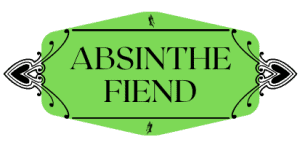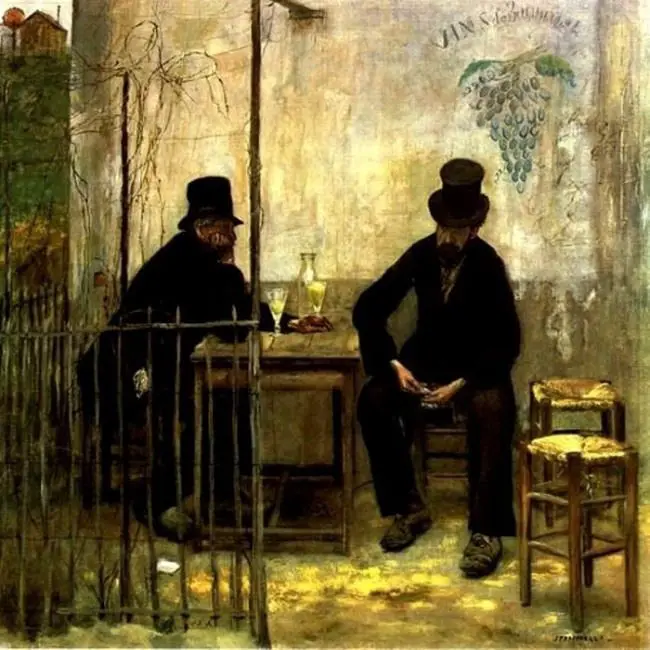Absinthe has a long and storied history, often shrouded in mystery and myth.
Despite the fact that absinthe has been legal in the United States since 2007, many people still hold on to misconceptions about this beloved spirit.
But it’s time to clear the air and give the Green Fairy a chance to speak her truth!
So, in this article, we will debunk seven common myths about absinthe.
Myth 1 – Absinthe is Hallucinogenic
One of the most pervasive myths about absinthe is that it is a hallucinogen. In fact, this is not true.
This belief is likely due to the fact that absinthe has a high alcohol content and contains the chemical compound thujone. Thujone is found in wormwood, one of the key herbs used to make absinthe.
However, despite its reputation, absinthe is not a hallucinogen. The levels of thujone in absinthe are nowhere near high enough to cause hallucinations.
The misconception that absinthe is a hallucinogen began in the 19th century when absinthe became popular among artists and writers in France.
These individuals believed that absinthe had a mind-altering effect that enhanced their creativity. However, this belief was not based on scientific evidence and was likely a result of the placebo effect.
While thujone can have psychoactive effects, the amount found in absinthe is not enough to produce these effects.
In fact, as Healthline points out, many of the negative effects associated with absinthe, such as mania and psychosis, were likely due to the high alcohol content rather than the thujone content.
As with any spirit, drinking too much absinthe can lead to alcohol poisoning and other negative health effects.
Overall, the belief that absinthe is a hallucinogen is a myth.
While absinthe may have a higher alcohol content than other spirits, it does not contain enough thujone to cause hallucinations or other psychoactive effects.
Recommended: How to Properly Prepare Absinthe (Beginner Friendly Guide)
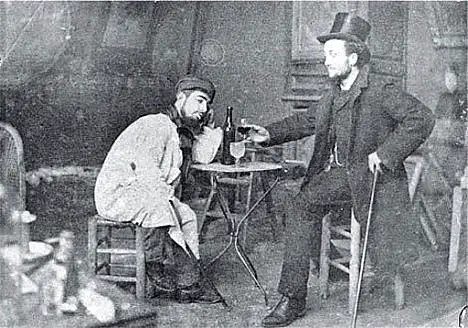
Myth 2: Absinthe is Illegal
Another one of the most common myths surrounding absinthe is that it is illegal.
While it is true that absinthe was banned in the U.S. in 1912, and in several European countries around the same time due to its alleged dangerous properties, it is no longer illegal in most countries today.
Thankfully for us absintheurs, absinthe is now widely available in the U.S.
In fact, absinthe was made legal in the U.S. in 2007 with regulated thujone levels!
As mentioned in the last myth, thujone is a chemical compound found in wormwood, which is one of the main ingredients in absinthe. The levels of thujone in absinthe are now regulated to ensure that they are safe for consumption.
Though, it is important to note that not all absinthe is created equal.
Some absinthe may still be illegal due to high levels of thujone or other dangerous ingredients. It is always important to check the label and ensure that the absinthe you are consuming is safe and legal.
Overall, the myth that absinthe is illegal is simply not true.
While it may have been banned in the past, it is now legal in most countries with regulated thujone levels.
As with any alcoholic beverage, it is important to consume absinthe responsibly and to ensure that it is safe and legal before consuming.
Related: Absinthe in the United States – The Rise, Fall, and Rise Again
Myth 3: Absinthe Will Make You Go Insane
One of the most persistent myths about absinthe is that it causes insanity.
This myth was popularized in the late 19th and early 20th centuries when absinthe was banned in many countries. The myth was fueled by sensationalist stories in the press and by the fact that some people who drank absinthe did exhibit symptoms of mental illness.
However, there is no scientific evidence to support the claim that absinthe causes insanity.
In fact, most experts agree that the symptoms exhibited by some absinthe drinkers were likely due to alcoholism, not absinthe itself.
The high alcohol content of absinthe, combined with the fact that it was often consumed in large quantities, made it a potent and dangerous drink.
Another factor that may have contributed to the belief that absinthe causes insanity is the fact that it was often associated with bohemian and artistic circles.
Many famous artists and writers, including Vincent van Gogh and Oscar Wilde, were known to drink absinthe. This association with unconventional and often troubled individuals may have helped to perpetuate the myth that absinthe was a dangerous and mind-altering substance.
Despite the fact that there is no evidence to support the claim that absinthe causes insanity, the myth persists to this day.
However, it is important to remember that absinthe is just another alcoholic beverage and that, like any other alcoholic beverage, it should be consumed in moderation.
You Might Like: The True Story of the Absinthe Murders

Myth 4 – Absinthe is Addictive
Yet another myth about absinthe is that it is highly addictive.
As you might have guessed, this is not entirely true.
While absinthe does contain alcohol (commonly 45-75% ABV), which can be addictive, it is not necessarily more addictive than any other alcoholic beverage.
However, it is important to note that while absinthe is not more addictive than other alcoholic beverages, it is still important to drink responsibly and in moderation.
Drinking too much absinthe, or any other alcoholic beverage for that matter, can lead to negative health consequences and addiction.
Related: Why Is Absinthe So Strong? [Explained!]
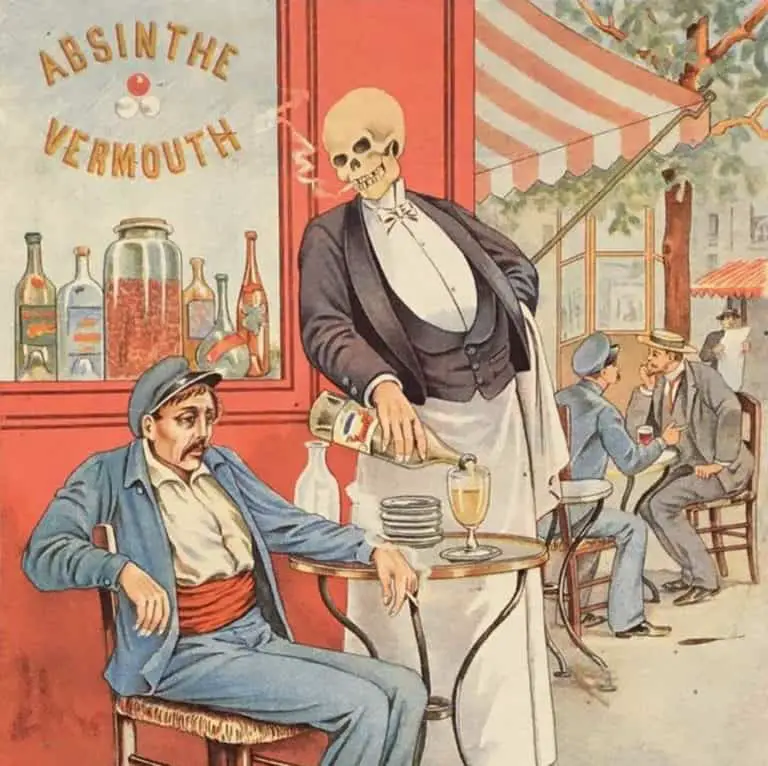
Myth 5 – Absinthe is Poisonous
Another one of the most common myths surrounding absinthe is that it is a dangerous poison that can lead to hallucinations, madness, and even death.
While it is true that absinthe is a high-proof spirit and should be consumed in moderation, it is no more dangerous than any other alcoholic beverage.
Additionally, the traditional method of preparing absinthe, which involves pouring water over a sugar cube and into the absinthe, is not only safe but also a beautiful and time-honored ritual!
Furthermore, it is important to note that absinthe is not a poison, but rather just a type of alcoholic beverage. It would be no different than saying that gin, whiskey, or rum are poisonous!
While true in the most technical of senses, there’s a big difference between absinthe and, say, cyanide.
Like any other alcoholic drink, absinthe can be dangerous if consumed in excess. However, when consumed in moderation, it is no more dangerous than any other alcoholic beverage.
It is also worth noting that absinthe has been enjoyed by people for centuries without any reports of serious harm.
While it is true that some people may have had negative experiences with absinthe, these experiences are not necessarily indicative of the drink itself, but rather the individual’s reaction to it.
Overall, the myth that absinthe is a dangerous poison is simply not true.
While it is important to consume absinthe in moderation, there is no evidence to suggest that it is any more harmful than any other alcoholic beverage.
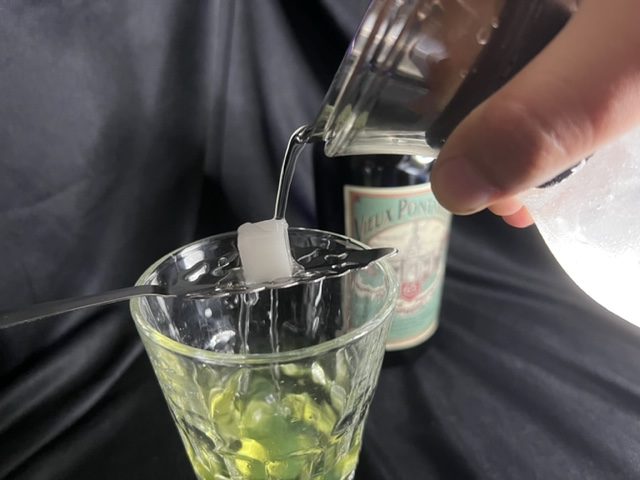
Myth 6 – Absinthe Should Be Lit on Fire
Regular readers will know that this is the one that REALLY gets me fired up! (Pun only slightly intended…)
Yet another one of the most common myths about absinthe is that it should be lit on fire before drinking.
It is speculated that this myth likely originated in the Czech Republic and surrounding areas somewhere in the ’90s. Despite the less-than-authentic nature of the absinth that was being served, setting it ablaze added to the mystique of the drink.
From there, it became taken as fact within the absinthe world, and the practice was immortalized in films like Moulin Rouge.
However, lighting absinthe on fire is not only unnecessary, but it can also ruin the taste and aroma of the drink.
As I’ve covered previously, when absinthe is lit on fire, it can burn the herbs and disrupt the delicate balance of flavors and aromas in the absinthe.
Not to mention that it can ruin the louche effect, which is the cloudy appearance that occurs when water is added to absinthe. This effect is highly valued by absinthe enthusiasts and is an important part of the drinking experience!
It is important to note that not all absinthe is created equal, and some brands may be more susceptible to burning than others.
However, regardless of the brand, lighting absinthe on fire is not necessary and can actually detract from the overall experience.
Instead of lighting absinthe on fire, it is recommended to serve it in the traditional manner.
This involves placing a sugar cube on a slotted spoon over a glass of absinthe, and slowly dripping cold water over the sugar cube until the absinthe turns cloudy. This method allows for the full flavor and aroma of the drink to be enjoyed without any unnecessary gimmicks.
Lighting absinthe on fire is a myth that should absolutely be debunked.
Not only is it unnecessary, but it can also ruin the taste and aroma of the drink. If you wish to fully appreciate this unique and complex spirit, stick to the traditional methods!
Final Thoughts – Debunking Absinthe Myths
It is important to separate fact from fiction when it comes to absinthe, and to enjoy it responsibly.
As we’ve learned, absinthe is not a hallucinogenic drink that will drive you to madness. It’s not even illegal in most countries!
Absinthe is a complex and fascinating spirit with a rich history and a unique flavor profile. While it has long been shrouded in mystery and myth, now is the time to set the record straight.
So go ahead and enjoy a glass of absinthe with confidence, knowing that you’re not drinking a deadly potion that will make you see green fairies.
Instead, you’re savoring a drink that has inspired artists and writers for centuries, and that continues to captivate adventurous drinkers today.
Let us raise our glasses with a hearty cheer to the truth about absinthe!
Santé!
